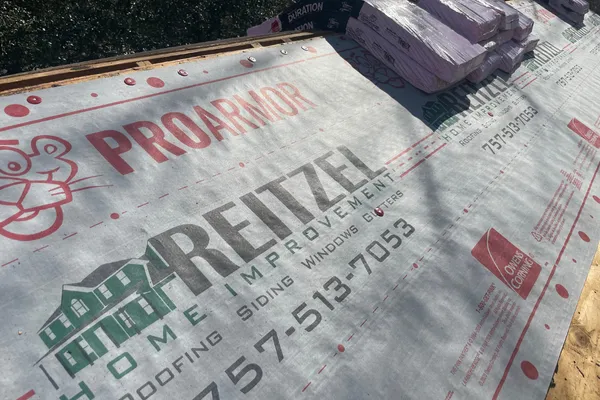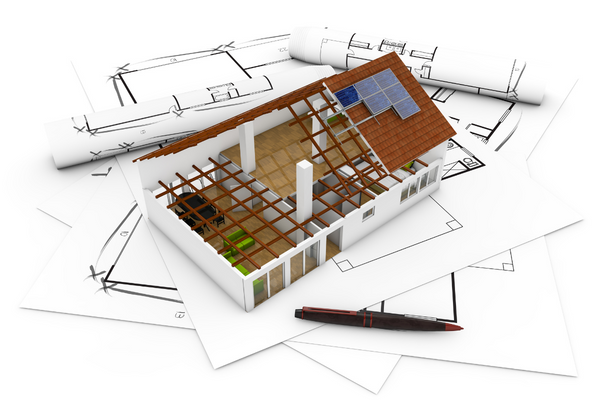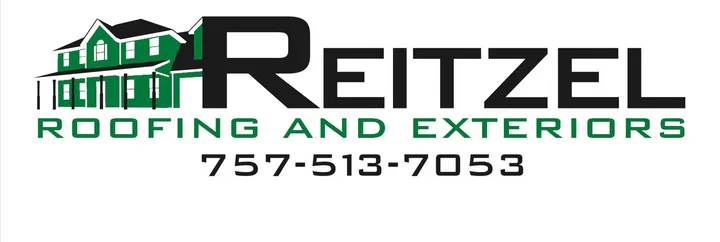LEARNING CENTER
CHECK OUT SOME OF OUR LATEST ARTICLES FROM IN OUR LEARNING CENTER

Layer by Layer: What Goes Into A Roof?
Do you ever look up at a roof and wonder how it all works? If so, you’re in luck! Local Virginia Beach roofer, Reitzel Roofing & Exteriors, is here to break down the anatomy of a roof and explain what all the components are and how they work together.
By the end of this post, you'll have a better understanding of roofing and be able to confidently identify the various components of a roof. So let’s get started!
The Deck
The deck is the foundation of a roof. It is the flat surface on which everything else will rest. The deck can be made from a variety of materials, including plywood, composite boards, or concrete. It is important to have a roofer or roofing contractor check the condition of your roof's deck before beginning any roofing project.
The deck should be smooth and solid, with no warps or gaps. If any damage has occurred, it must be repaired or replaced in order for the roof to remain safe and functional. A professional roofer or roofing contractor will be able to determine if repairs or replacement are necessary.
The deck also serves as insulation and helps to protect the interior of your home from the elements. It is important to use quality materials when constructing the deck so that it can withstand wind, rain, snow, and other weather conditions. A roofer or roofing contractor can help you select the right materials for your needs.

The Underlayment
The underlayment is a critical component of any roofing system and is usually installed by a professional roofing contractor. The underlayment acts as a waterproof barrier between the deck and shingles and protects against moisture, wind-driven rain, and ice dams. Underlayment also provides additional insulation and helps extend the life of your roof. There are two common types of underlayment – felt paper and synthetic. Felt paper is an asphalt saturated paper that is applied over the deck and can be applied with nails or staples. Synthetic underlayment offers more resistance to water penetration, tear strength, and fire protection, making it the preferred option for most roofing contractors.
Shingles
Shingles are an important part of the roof, as they provide both aesthetic value and protection against the elements. Shingles come in a variety of colors, shapes, sizes, and materials, so it is important to consult with a roofing contractor to determine which shingles are best suited for your roof.
Asphalt shingles are the most common type of shingle used on residential roofs, and they come in three-tab shingles or laminated shingles.
Three-tab shingles are the traditional type of asphalt shingle and they are made up of one layer of material.
Laminated shingles, on the other hand, have two layers of material and offer more protection from the elements than three-tab shingles. Wood shingles are also available and can provide a unique look for your roof.
Tile and slate shingles are heavier and more expensive than asphalt shingles, but they also provide greater durability and a longer lifespan.
When deciding which type of shingle to use for your roof, it is important to consult with a reputable roofing contractor to ensure that you get the best product for your home.
Flashing
Flashing is a key component of the roofing system and is installed by your roofing contractor. It is installed around chimneys, walls, and other roof protrusions to help direct water away from these openings and into the gutters and downspouts. Without flashing, water can seep into these openings and cause water damage and/or leaks.
The most common types of flashing used on roofs are made of galvanized steel, aluminum, or copper. Each type of flashing has different benefits, depending on the particular application, so it’s important to consult with your roofing contractor before installing any flashing. Properly installed flashing can provide protection from water damage and help ensure the longevity of your roof.
Gutters and Downspouts
Gutters and downspouts are essential components of a roofing system. They protect the home from water damage caused by rainwater runoff. Gutters are installed along the roof edge to collect and divert water away from the roof and the foundation of the house. Downspouts are connected to the gutters and direct the water further away from the home. It is important to keep gutters and downspouts in good condition and regularly cleaned out to prevent clogs.
A professional roofing contractor should be consulted for installation and maintenance of gutters and downspouts. Properly installed gutters and downspouts will prevent water from pooling around the foundation of the home, which can lead to more costly repairs due to foundation or structural damage. It is also important to inspect your gutters and downspouts regularly to ensure they remain free of debris and are in good working order.

Our Services
Roof Repairs
Roof Leaks
Roof Storm Damage
Roof Replacement
Residential Roofing
Commercial Roofing
Siding
Trim
Windows
Fencing
Decks
Resources
Learning Center
Financing
Areas We Service
About Us
Contact Us
Privacy Policy
Copyright © 2022 Reitzel Roofing and Exteriors
All Rights Reserved

Our Services
Resources








